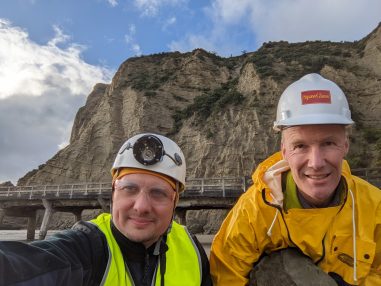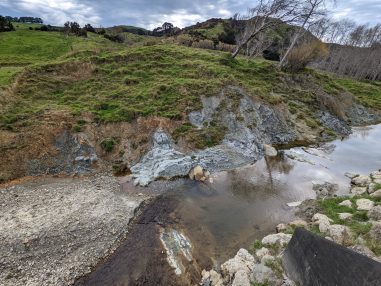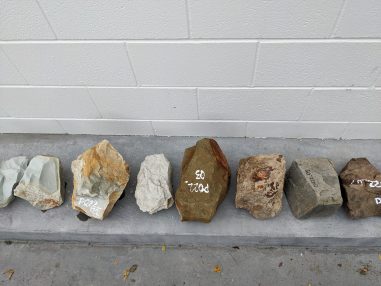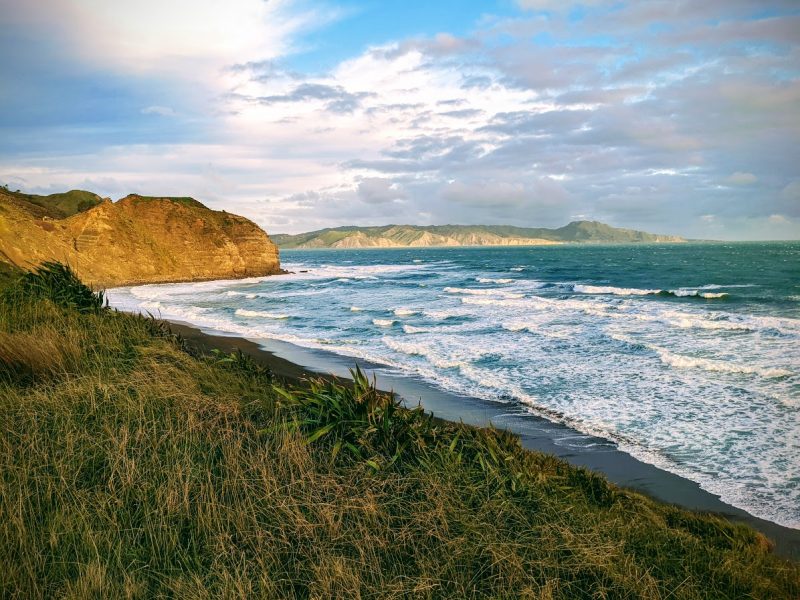Researchers Show That Slow-Moving Earthquakes Are Controlled by Rock Permeability
May 7, 2024

Earthquakes are the most dramatic and noteworthy results of tectonic plate movement. They are often destructive and deadly, or at the very least physically felt — they’re literally groundbreaking geological events. However not all tectonic movement results in effects that humans can perceive.
Slow slip events occur when pent up tectonic forces are released over the course of a few days or months, like an earthquake unfolding in slow motion. The more gradual movement means people won’t feel the earth shaking beneath their feet and buildings won’t collapse. But the lack of destruction does not make slow slip events less scientifically important. In fact, their role in the earthquake cycle may help lead to a better model to predict when earthquakes happen.
In a paper published recently in Geophysical Research Letters, a Jackson School of Geosciences research group led by Harm Van Avendonk, Nathan Bangs and Nicola Tisato explores how the makeup of rocks, specifically their permeability — or how easily fluids can flow through them — affects the frequency and intensity of slow slip events.
In 2019 and 2022, the group traveled to New Zealand’s North Island to collect rocks from several outcrops near the Hikurangi Margin. This is a subduction zone off New Zealand’s coast where slow slip events occur routinely, about once a year. The researchers brought back a cache of rocks to UT, where they tested their permeability and elastic properties.

Their tests showed how pores in the rocks could control the regular slow slip events at this subduction zone. Previous studies have suggested that a layer of impermeable rock at the top of the descending tectonic plate serves as a sealed lid, trapping fluid in the pores of underlying rock layers. As fluid accumulates beneath the seal, the pressure builds, eventually becoming high enough to trigger a slow slip event or earthquake. This event then breaks the impermeable seal, temporarily fracturing the rocks, allowing them to soak up fluids. Within a few months, the rocks heal and return to their initial permeability, and the cycle starts all over again.
In studying this cycle, Tisato and other researchers tested rocks from nearby surface outcrops which were once part of the earthquake fault deep underground. Previous permeability studies have been performed only on loose sediments that have been consolidated into solid rock.
“We are showing for the first time, using rocks that are representative of those at depth, that permeability is controlling (slow slip events),” he said.

Laura Wallace, a researcher at the University of Texas Institute for Geophysics and GEOMAR in Germany, has been studying slow slip events for more than 20 years, and was the first person to record slow slip events occurring in the Hikurangi Margin. She said that this paper adds more data points to inform the time scales over which the fault zone permeability changes can take place, possibly influencing the observed slow slip event cycles.
“It adds some additional data constraints on how this fault-valve process might work, how fluid cycling could work at the subduction zone — if that’s indeed what’s driving the cyclicity of these things,” Wallace said.
The ultimate goal of this research, Tisato said, is to understand why earthquakes happen and to eventually build a convincing model that can even predict them, a code scientists have yet to crack.
He and graduate student Jacob Allen are currently analyzing rock samples from the center of the margin and testing for differences in permeability. The rocks at the northern end of this subduction zone are richer in clays than those at the southern end. Because clays are malleable and can accommodate a lot of water and other fluids, they are ideally suited to trap, fracture and channel those fluids. That could explain why slow slip events on the northern end of the subduction zone happen frequently, whereas they occur rarely on the southern end, Tisato said.
“We have to go through the exercise of understanding why in the north of the Hikurangi Margin there are slow slips, and why in the south of the Hikurangi Margin we have fewer slow slips,” Tisato said. “Because if we understand that, then we have an additional step to go towards the prediction.”
Three graduate students from the Jackson School of Geosciences also contributed to this paper: Carolyn Bland, Kelly Olsen, and Andrew Gase.

